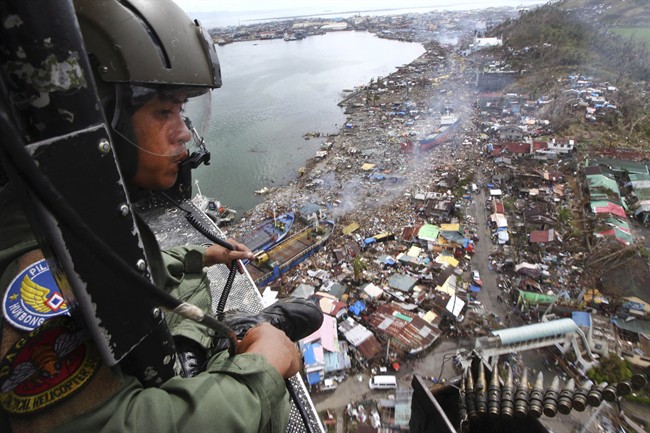MANILA, Philippines – The average annual cost of natural disasters has quadrupled over the last three decades and it makes economic sense to boost spending on preparedness to ensure a stable future, a senior European official said Thursday.

Kristalina Georgieva, European Commissioner for humanitarian aid and crisis response, told a conference on disaster risk reduction and management of the Asia-Europe Meeting that costs related to natural disasters have increased from $50 billion a year in the 1980s to $200 billion in the last decade. In three of the last four years, costs exceeded $200 billion.
READ MORE: Natural disasters, rising costs are Canada’s biggest public safety risk
She said only four per cent of spending for natural disasters today goes to prevention and preparedness, with 96 per cent spent on response. But, she said, evidence shows every dollar spent on prevention brings at least $4 in savings on damage.
About 200 participants from 49 countries and organizations have gathered in Manila to discuss ways to increase countries’ disaster resilience. Officials from the Philippines offered lessons learned from Typhoon Haiyan, which devastated central provinces in November and killed more than 6,000 people. It’s the strongest recorded typhoon to hit land.

“Turning this pyramid of investments around would go a long way to help build resilient societies,” Georgieva said. “And we know the evidence is so clear that it makes financial, economic sense – 1 peso, 1 euro, 1 dollar of prevention brings four to seven times saving in terms of reduction in damage.”
She said it was important to target vulnerable sectors like children, women, the elderly and the handicapped because in disasters, 80 per cent of victims come from the 20 per cent most vulnerable people.
READ MORE: Why Super Typhoon Haiyan was so destructive
Philippine President Benigno Aquino III said effects of climate change are worsening at an alarming pace, with typhoons becoming stronger, more frequent, more devastating and larger in scale.
“It is vital — now more than ever — that we mount a focused, international effort to address the threats posed by climate change and to build communities that are resilient in the face of disaster,” he added.
Aquino said that after Haiyan, the Philippines has “refused to be condemned to the vicious cycle of destruction and reconstruction” and has taken efforts to build back better.
He said the government has boosted preparedness and enhanced scientific capabilities to estimate the amount of rainfall, as well as wind and rain strength. It has improved early warning systems and has put up a website to enable people to access real-time weather information, among other measures.
“It cannot be business as usual,” said Margareta Wahlstrom, special representative of the United Nations Secretary General for Disaster Risk Reduction.


Comments